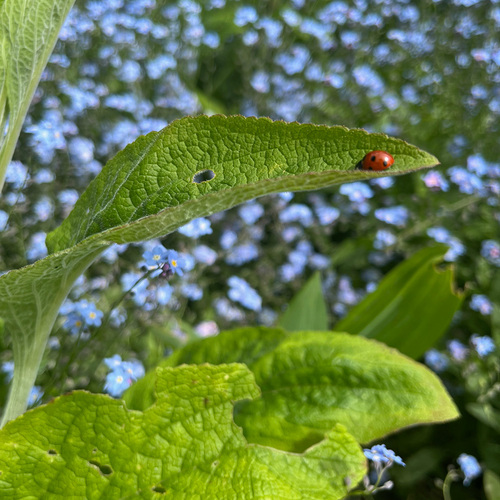Happy Monday GPODers!
So far this season we’ve been treated to some lovely photos of spring plants from across the US. Early spring blooms from Carla in Pennsylvania, Daniel’s flowering trees in Northern California, Lori’s colorful scenes in the San Diego area, and fresh spring color from Beth in North Carolina. We’re sticking with the theme of fresh and colorful spring flowers today, but we get to see it with a European twist. Yana Schneider in Langen, Germany (located in eastern Germany, outside the city of Frankfurt) has shared her spring garden with us, focusing on the clusters and masses of tiny blue flowers that fill her borders in the early season.
My name is Yana Schneider and I am a hobby gardener from Ukraine, living in Langen, Hessen, Germany.
Three years ago my husband and I bought this property with a garden which consisted to 99% of lawn. One year later, after a very hot summer season and a lot of sun burned lawn, we decided to create flower beds for pollinators using sheet mulching technique and add some shrubs and trees—f.e. juneberry (Amelanchier lamarckii, Zone 4–8), Japanese maples, roses, birches, etc.—for height and shade.
I love self seeding flowers, so I bought some packages of forget-me-not (Myosotis sylvatica, Zone 4–8) seeds, sprinkled them around and two years later the flower beds are bursting with these lovely tiny blue flowers.
Hope you enjoy the pictures and video of my spring blue paradise.
With love from Germany,
Yana Schneider
Even on a misty, foggy morning the tiny blue blooms of forget-me-nots absolutely glow. Beyond just being a pretty flower, this short-lived perennial or biennial has a long history in Germany that dates back to the Middle Ages. You may have heard the old legend about a German knight being swept away by a river and tossing these flowers to his lady shouting, “forget me not!” But, of course, there is more fiction to that story than fact. It is more likely their blue color, which was associated with fidelity in the Middle Ages, that eventually contributed to the flower’s name and meaning. Read this short but enlightening article from The Metropolitan Museum of Art to learn about the history of forget-me-nots: When This You See, Remember Me.
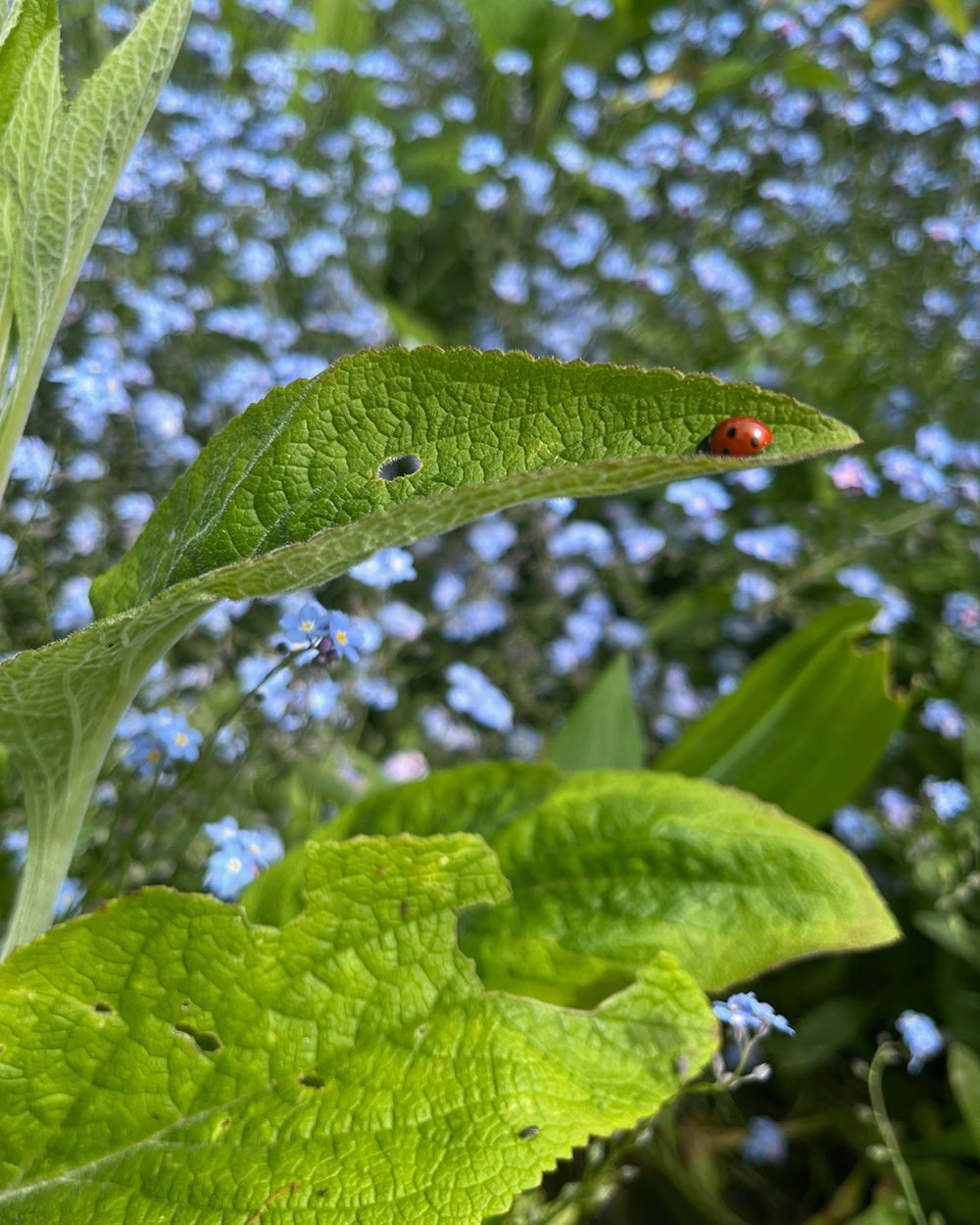 A visiting ladybug, another exciting sign of the start of the season, sits on a leaf above a sea of spectacular blue blooms. Like in some areas of the US, forget-me-nots can easily over seed in temperate parts of Europe, and keeping the plant in check is crucial to keep it from spreading out of control. (In some sates this plant is considered invasive, so be sure to check your local extension services or invasive.org before sowing any of your own seeds)
A visiting ladybug, another exciting sign of the start of the season, sits on a leaf above a sea of spectacular blue blooms. Like in some areas of the US, forget-me-nots can easily over seed in temperate parts of Europe, and keeping the plant in check is crucial to keep it from spreading out of control. (In some sates this plant is considered invasive, so be sure to check your local extension services or invasive.org before sowing any of your own seeds)
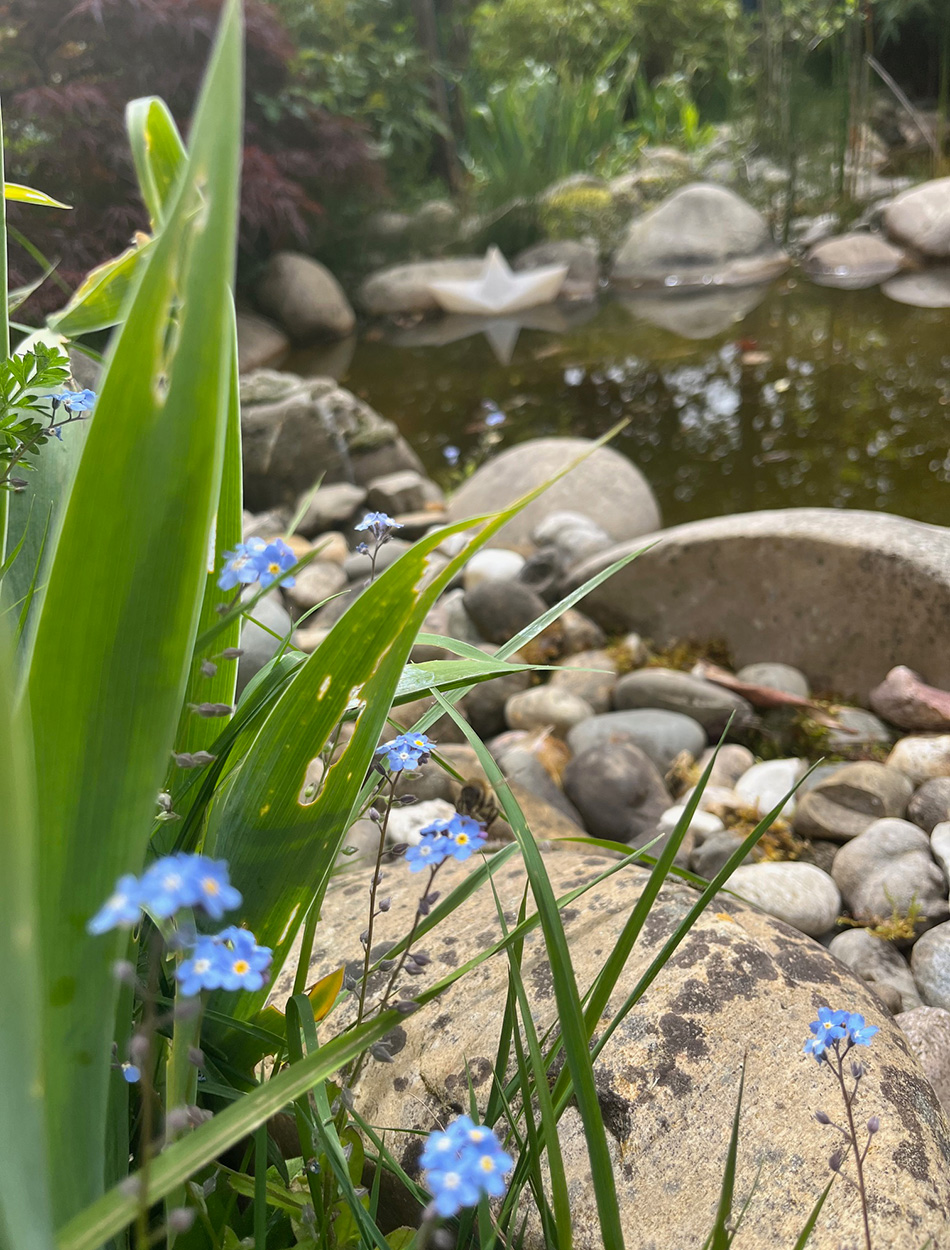 Yana seems to have no issues keeping it contained, and I actually love that the flowers are sprinkled throughout the garden in different densities. Some areas are huge masses, while other are more sporadic clumps that add little sparkles of blue amongst the foliage of other plants yet to bloom.
Yana seems to have no issues keeping it contained, and I actually love that the flowers are sprinkled throughout the garden in different densities. Some areas are huge masses, while other are more sporadic clumps that add little sparkles of blue amongst the foliage of other plants yet to bloom.
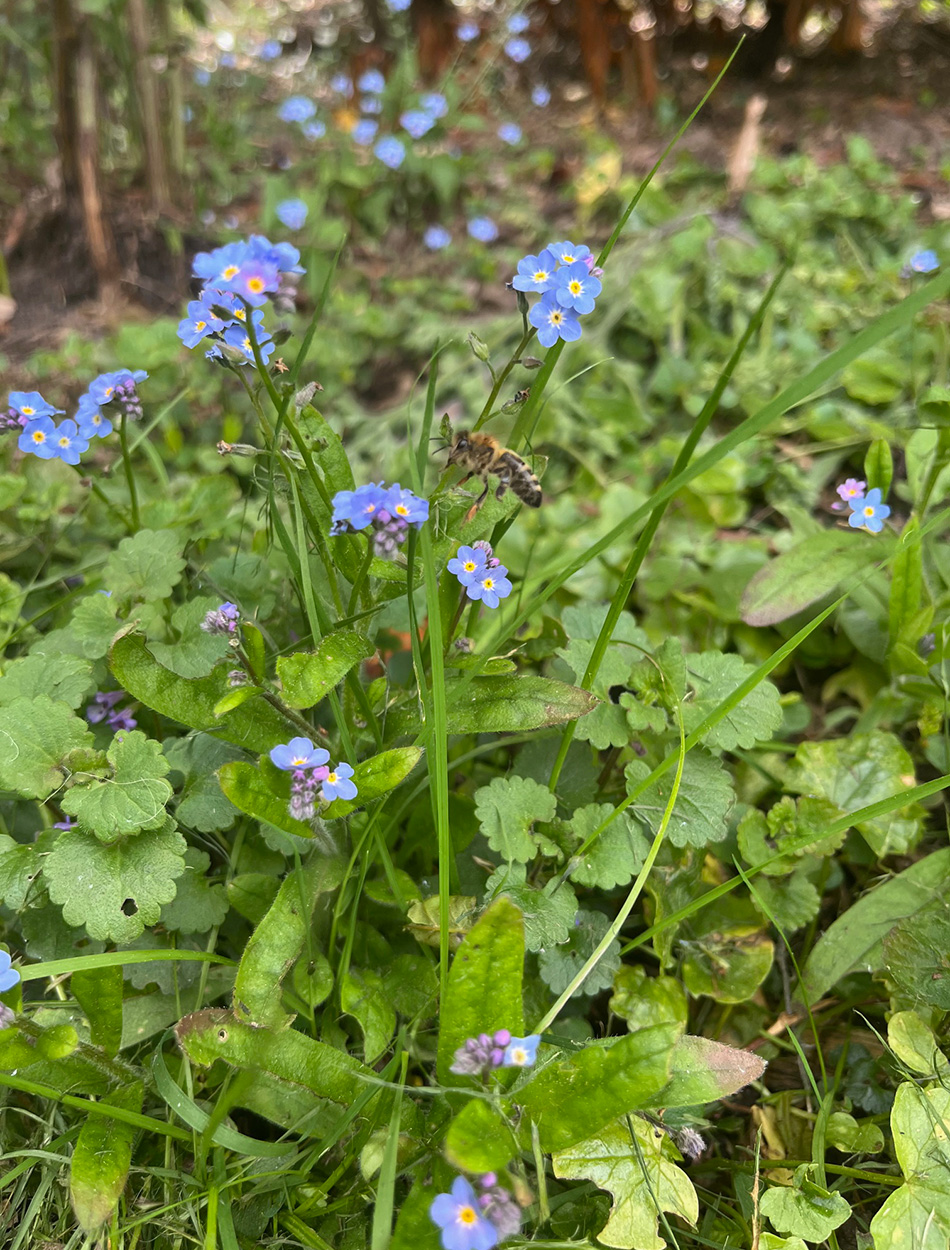 A busy bee has a wealth of blooms to choose from. What a feast for busy pollinators at the start of the season.
A busy bee has a wealth of blooms to choose from. What a feast for busy pollinators at the start of the season.
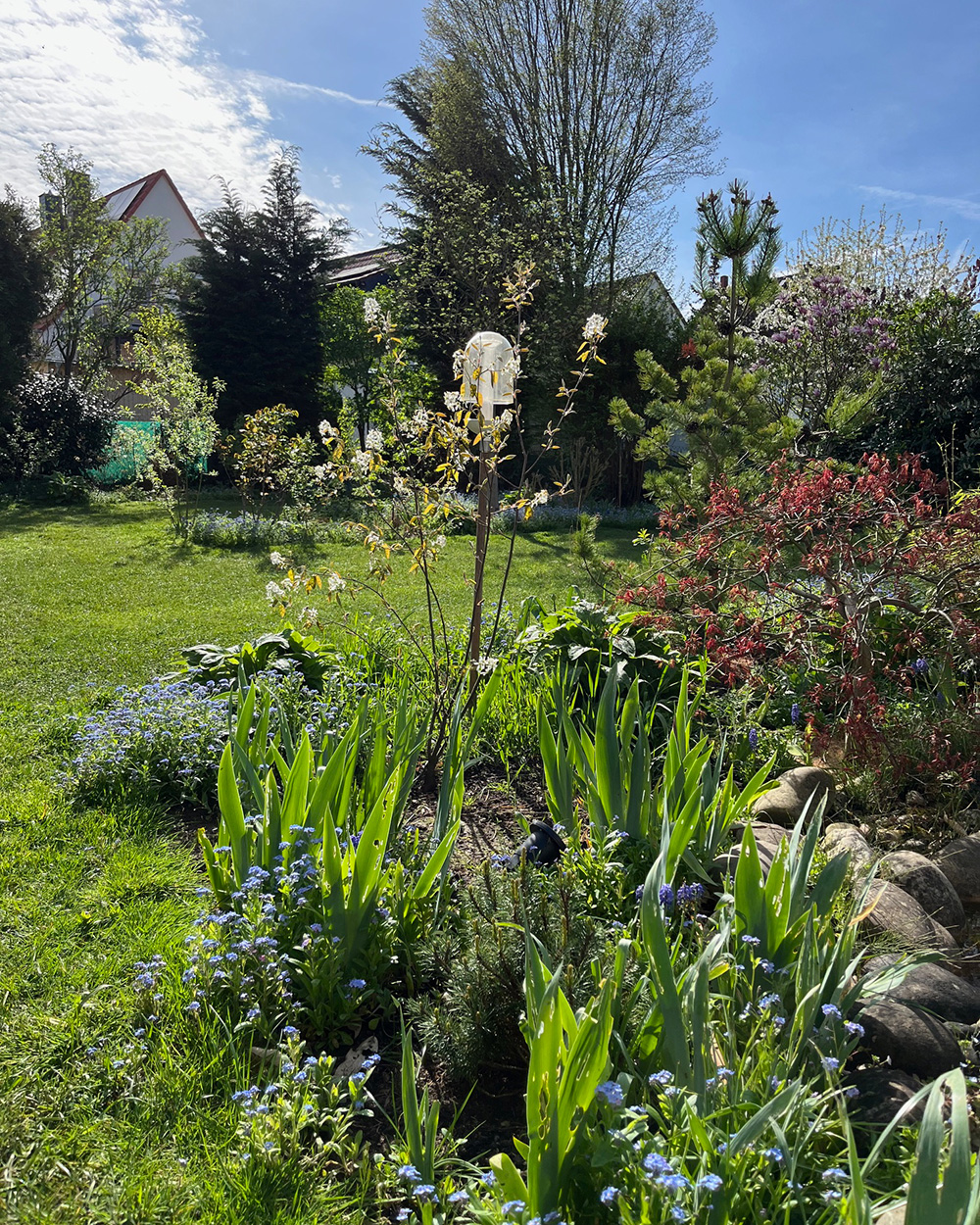 A wider view of the garden, with some evergreens and flowering woodies joining the forget-me-nots in their springtime show. Again, we see the beautiful way Yana has spread these tiny blue blooms throughout her garden.
A wider view of the garden, with some evergreens and flowering woodies joining the forget-me-nots in their springtime show. Again, we see the beautiful way Yana has spread these tiny blue blooms throughout her garden.
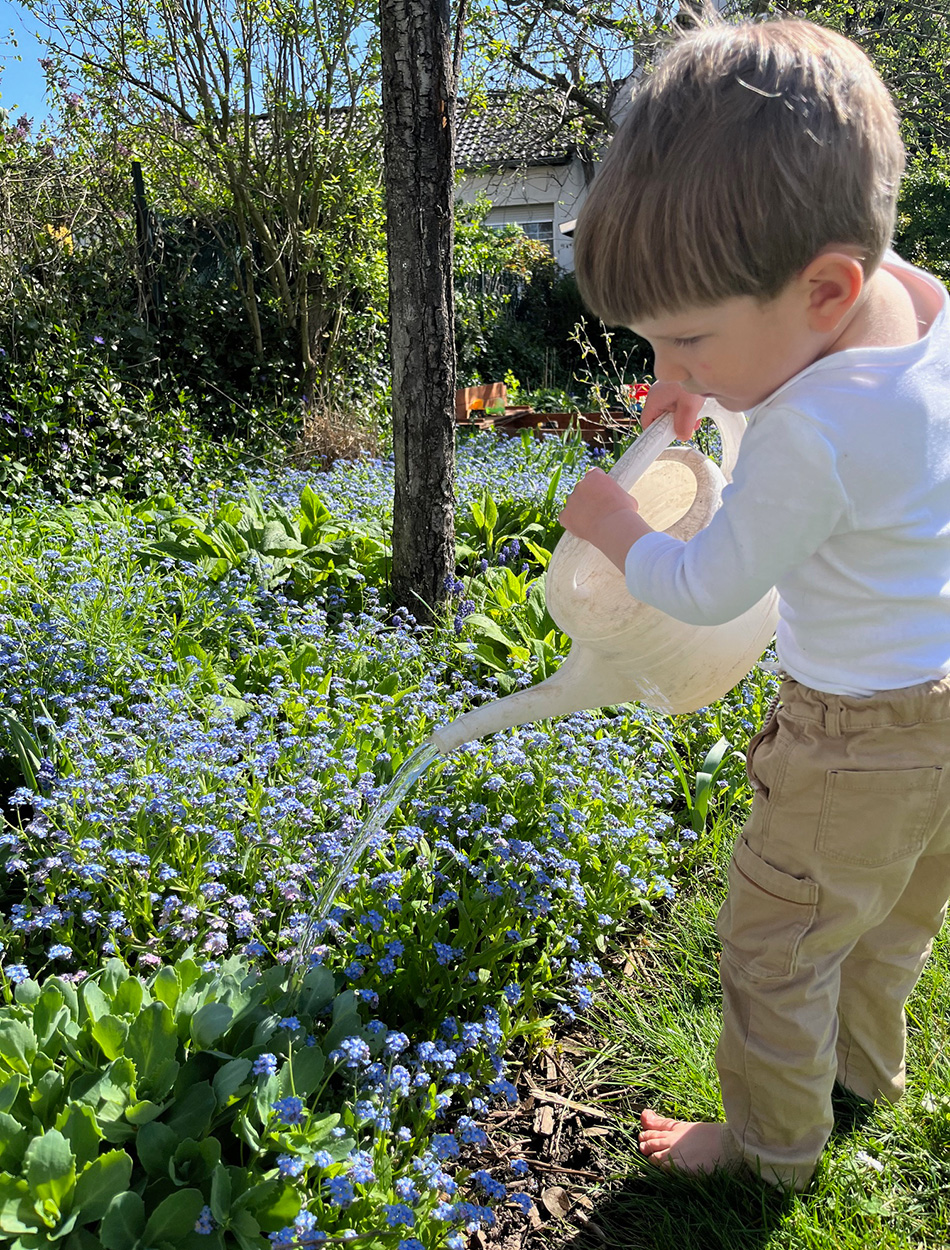 A little garden helper gets to enjoy the blue blooms while hard at work doing spring chores!
A little garden helper gets to enjoy the blue blooms while hard at work doing spring chores!
Lastly, Yana also included a video of her spring garden! What a treat to see the space from so many different angles and perspectives.
Thank you so much for sharing you gorgeous spring garden with us, Yana! As the season continues on and other blooms emerge, I can’t imagine ever forgetting about these beautiful blue scenes 😉
And please, keep the spring garden photos coming! I would love to see what spring 2025 is looking like in more states, regions, or even more countries. Follow the directions below to submit photos via email, or send me a DM on Instagram: @agirlherdogandtheroad.
We want to see YOUR garden!
Have photos to share? We’d love to see your garden, a particular collection of plants you love, or a wonderful garden you had the chance to visit!
To submit, send 5-10 photos to [email protected] along with some information about the plants in the pictures and where you took the photos. We’d love to hear where you are located, how long you’ve been gardening, successes you are proud of, failures you learned from, hopes for the future, favorite plants, or funny stories from your garden.
Have a mobile phone? Tag your photos on Facebook, Instagram or Twitter with #FineGardening!
Do you receive the GPOD by email yet? Sign up here.
Fine Gardening Recommended Products
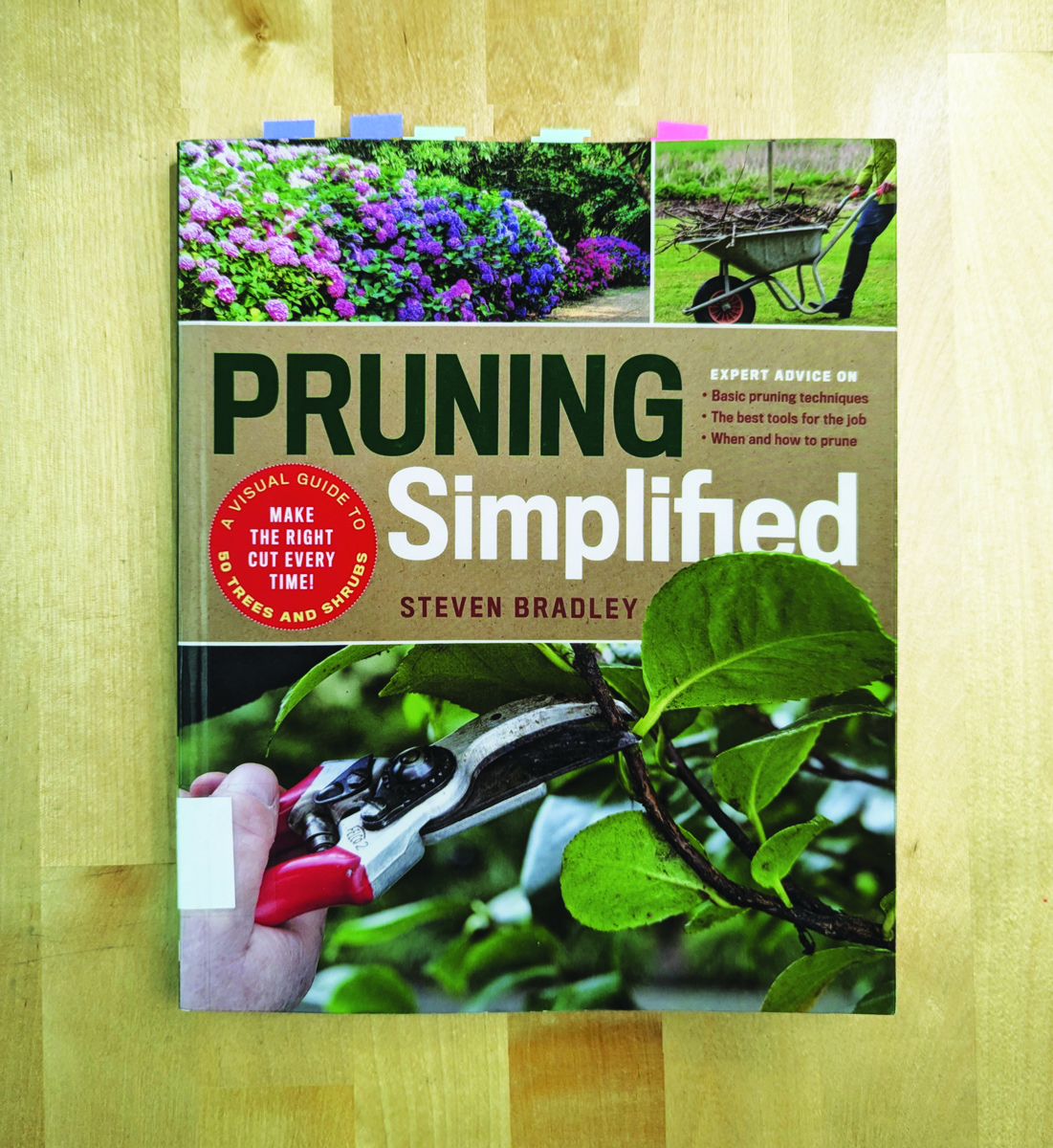
Pruning Simplified: A Step-by-Step Guide to 50 Popular Trees and Shrubs
Fine Gardening receives a commission for items purchased through links on this site, including Amazon Associates and other affiliate advertising programs.
Pruning Simplified shows you exactly how to do it. This must-have guide offers expert advice on the best tools for the job, specific details on when to prune, and clear instructions on how to prune. Profiles of the 50 most popular trees and shrubs—including azaleas, camellias, clematis, hydrangeas, and more—include illustrated, easy-to-follow instructions that will ensure you make the right cut the first time.

ARS Telescoping Long Reach Pruner
Fine Gardening receives a commission for items purchased through links on this site, including Amazon Associates and other affiliate advertising programs.
Telescopes from 4 to 7′. Cut and Hold (160) Blades. Drop forged blades for unsurpassed long lasting sharpness. Lightweight, 2.3 lbs., for continued use. Perfectly balanced for easy pruning.
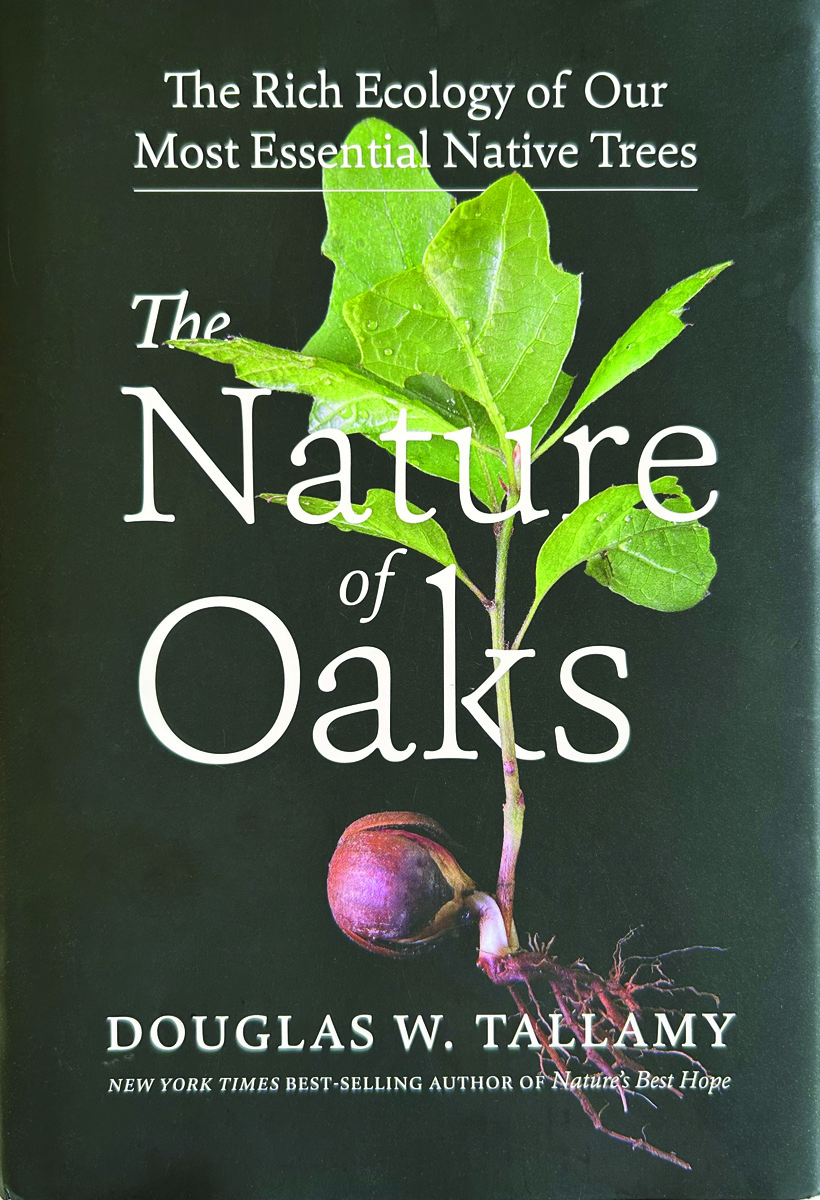
The Nature of Oaks: The Rich Ecology of Our Most Essential Native Trees
Fine Gardening receives a commission for items purchased through links on this site, including Amazon Associates and other affiliate advertising programs.
The Nature of Oaks reveals what is going on in oak trees month by month, highlighting the seasonal cycles of life, death, and renewal. From woodpeckers who collect and store hundreds of acorns for sustenance to the beauty of jewel caterpillars, Doug Tallamy illuminates and celebrates the wonders that occur right in our own backyards. He also shares practical advice about how to plant and care for an oak, along with information about the best oak species for your area.

